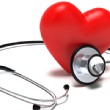The Disease of Sex Addiction II
Many people resist the notion that sex addiction is a disease.
But in The Minnesota Model, a seminal book on addiction recovery, Spicer points out the similarities between chemical dependence and the disease concept.
Borrowing from George Vaillant's The Natural History of Alcoholism, Spicer shows how chemical dependence, like a disease, cuts across cultural and socioeconomic lines, is progressive, has specific signs and symptoms, and has a recommended course of treatment.
In our view, sex addiction is no different.
Here's why: Does Not Discriminate First, like other diseases, sex addiction is an equal opportunity disease.
It could care less about your race or culture.
It doesn't care about the fact that you're young, middle-aged, or elderly.
And it doesn't care if you're broke or wealthy.
It's a debilitating disease that affects people from all walks of life without discrimination or prejudice.
Progressive Second, like other diseases, sex addiction is progressive.
The frequency, intensity, and measure of risk increases with time.
Masturbation may progress from once-a-week to three times a day.
What began as a once-a-year trip to get an erotic massage turns into a twice-a-week event.
The need for greater intensity leads to greater risk-taking.
In the process, sex addicts contract sexually transmitted diseases, get caught in sting operations, and even commit suicide.
Spicer writes that "people with a disease find their responses are less flexible.
" The sex addict's response to the normal ups and downs of life become progressively confined to a single, destructive response: the search for sexual satisfaction.
Has Recognizable Signs and Symptoms Third, like other diseases, sex addiction shows certain signs and symptoms.
Addicts often display some of the following symptoms: a deep feeling of shame and guilt following acting out behavior, constant obsession with acting out, and general malaise if unable to engage in the behavior.
They also show the following signs: an inordinate amount of time spent in the pursuit of and recuperating from sex, unsuccessful attempts at stopping their behavior on their own, and decreased engagement in social, professional, or recreational activities.
Once people acknowledge that they need help, they complain of having most, if not all of these signs and symptoms.
Has a Recommended Treatment Finally, like other diseases, the diagnosis comes with a set of specific interventions that promote recovery.
In its simplest form the prescription is this: individual therapy, group therapy, and 12-step meetings.
In the process of participating in these relational activities, one needs learn about their disease and the tools needed to recover from it, how to manage their emotions without acting out, and maybe most importantly, how to be honest with themselves and others.
When sex addicts follow the suggested course of treatment, it's our experience that they recover to live happy and meaningful lives.
But in The Minnesota Model, a seminal book on addiction recovery, Spicer points out the similarities between chemical dependence and the disease concept.
Borrowing from George Vaillant's The Natural History of Alcoholism, Spicer shows how chemical dependence, like a disease, cuts across cultural and socioeconomic lines, is progressive, has specific signs and symptoms, and has a recommended course of treatment.
In our view, sex addiction is no different.
Here's why: Does Not Discriminate First, like other diseases, sex addiction is an equal opportunity disease.
It could care less about your race or culture.
It doesn't care about the fact that you're young, middle-aged, or elderly.
And it doesn't care if you're broke or wealthy.
It's a debilitating disease that affects people from all walks of life without discrimination or prejudice.
Progressive Second, like other diseases, sex addiction is progressive.
The frequency, intensity, and measure of risk increases with time.
Masturbation may progress from once-a-week to three times a day.
What began as a once-a-year trip to get an erotic massage turns into a twice-a-week event.
The need for greater intensity leads to greater risk-taking.
In the process, sex addicts contract sexually transmitted diseases, get caught in sting operations, and even commit suicide.
Spicer writes that "people with a disease find their responses are less flexible.
" The sex addict's response to the normal ups and downs of life become progressively confined to a single, destructive response: the search for sexual satisfaction.
Has Recognizable Signs and Symptoms Third, like other diseases, sex addiction shows certain signs and symptoms.
Addicts often display some of the following symptoms: a deep feeling of shame and guilt following acting out behavior, constant obsession with acting out, and general malaise if unable to engage in the behavior.
They also show the following signs: an inordinate amount of time spent in the pursuit of and recuperating from sex, unsuccessful attempts at stopping their behavior on their own, and decreased engagement in social, professional, or recreational activities.
Once people acknowledge that they need help, they complain of having most, if not all of these signs and symptoms.
Has a Recommended Treatment Finally, like other diseases, the diagnosis comes with a set of specific interventions that promote recovery.
In its simplest form the prescription is this: individual therapy, group therapy, and 12-step meetings.
In the process of participating in these relational activities, one needs learn about their disease and the tools needed to recover from it, how to manage their emotions without acting out, and maybe most importantly, how to be honest with themselves and others.
When sex addicts follow the suggested course of treatment, it's our experience that they recover to live happy and meaningful lives.




















